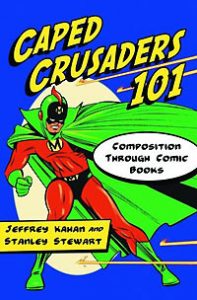Comics Make for Colorful Learning
First graders in the after-school program at the Bronx’s PS 90 spent part of last school year working collaboratively to create a comic book called The Bionic Butterfly. The title character, infected with pollutants, turned into a very strong, intelligent superhero butterfly with a mission to warn insects — and humans — about the dangers facing Earth’s environment.
This y ear, groups of kindergartners, first graders, and fourth graders are writing and drawing comics on the topic of bullying. “The kids get to color and draw, which they love to do anyway,” says Claudia Bostick, after-school coordinator at the school, whose program is funded by the After School Corporation and the Bronx’s Citizens Advice Bureau. “We can sneak in other art lessons in that context. And for literacy, it’s great. This encourages them to tell stories, to write stories, and to listen better.”
ear, groups of kindergartners, first graders, and fourth graders are writing and drawing comics on the topic of bullying. “The kids get to color and draw, which they love to do anyway,” says Claudia Bostick, after-school coordinator at the school, whose program is funded by the After School Corporation and the Bronx’s Citizens Advice Bureau. “We can sneak in other art lessons in that context. And for literacy, it’s great. This encourages them to tell stories, to write stories, and to listen better.”
The program receives some help. The Comic Book Project, hosted by Columbia University’s Teachers College, supports the kids in their efforts. And according to Bostick, the project has increased the desire of her students at this low-performing school to learn reading.
But that’s nothing new. Educators have used comic books to teach reading for decades, says Michael Bitz, founder and director of the Comic Book Project, which began in 2001 and this year is reaching 850 schools and 12,000 children across the United States. However, he says there is one major difference now: “What’s new is the wider scale.” More than 50,000 kids have been involved since the project’s inception.
According to Bitz, the project and its peer programs “engage children on another level to create something that comes from them, reflects on literature, and reflects on characters and story lines.” He adds that the rise of graphic novels, in particular the Pulitzer Prize-winning, Holocaust-themed Maus: A Survivor’s Tale, by Art Spiegelman, has paved the way for wider acceptance of comic books as literature. “All of those graphic novels represent a real, viable component of literature.”
The Comic Book Project consists primarily of a curriculum designed to put tools in educators’ hands, although the project and its staff answer questions and provide support as needed. The project even publishes some of the children’s finished products.
Drawing Out Project Learning
Bitz notes that the Comic Book Project, as its name implies, focuses on project learning. “Those kinds of collaborations have been fascinating,” he says. “Schools will often partner a strong writer with a strong artist. Sometimes, the student collaborations have been larger, with teams of four or five kids. I encourage educators to find a role for every child in the project.”
Bostick agrees and believes the project nature of the work provides the usual benefits gained from such an approach: deeper and more comprehensive learning, an appreciation of the collaborative process, and improved social skills. She says her students determine among themselves who should play what role in the project. “They decide Mike is going to draw the characters and Tanya colors well, so she’s going to do the coloring,” she adds. “They work it out so there are individual jobs that come together for one purpose.” That’s not always easy, of course, especially with young children, but she adds, “It helps them listen better. It also helps them develop their own ideas.”
The interplay among various children’s ideas lends richness to a topic such as bullying, Bitz notes. “In the comic books, we see kids thinking much more critically about why bullying happens,” he says.“They’re really starting to delve into the issues, rather than creating your typical superhero-villain comic book.”
Classics Become Comics
At the School of Arts and Enterprise, a charter high school in Pomona, California, students learn a multitude of subjects through comic books (and other media). Teacher David Baldizon draws from the book Caped Crusaders 101: Composition Through Comic Books, which explores the literary features of comics and leads students from Batman to Hamlet and from Captain America to the Cold War.
“Students get the whole concept and read Hamlet more easily and with more excitement than they have before,” Baldizon says. “It’s really used to stimulate further knowledge and exploration in academics.”
The School of Arts and Enterprise gives students the option to create comics in groups or go solo, Baldizon notes, but he believes those who work together gain additional benefits. “In order for an artist and a writer to get a good story going, they have to communicate. They have to shop their ideas to each other,” he explains. “That’s something we’ve seen grow out of this, a confidence in approaching and discussing ideas.”
One group of female students already has been invited to have its work published, and many other students have attended comic book conventions in San Francisco, Los Angeles, and San Diego to promote their work, according to Baldizon. “The goal is for them to get excited and to learn outside as well as inside the classroom,” he says.
This article was published at: www.edutopia.org
by Ed Finkel, a writer in Evanston, Illinois, covers education and public policy.
